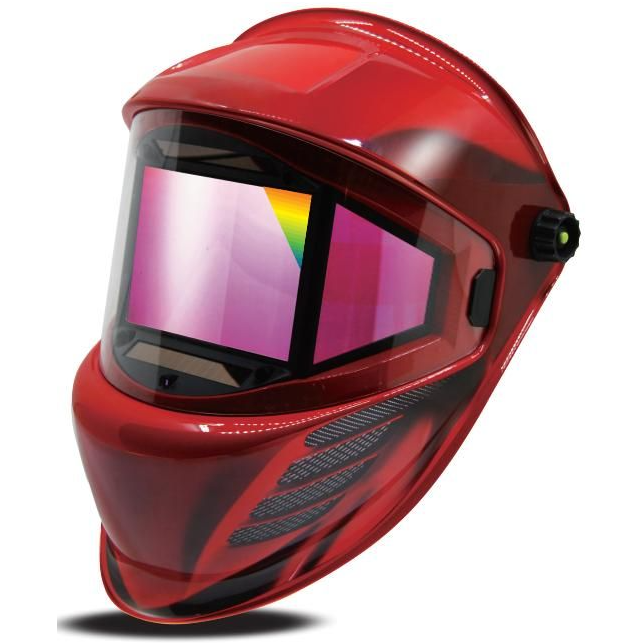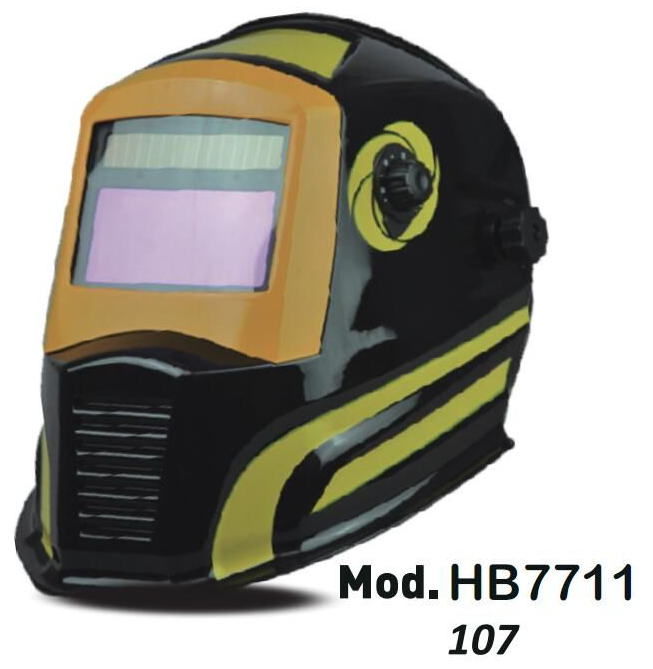Welding helmets are crucial for protecting the eyes and face from the bright light and intense heat generated during welding. One essential feature of modern welding helmets is the auto-darkening lens, which adjusts in real-time to shield welders from harmful rays. But how fast should a welding helmet darken, and what factors affect its responsiveness?
Why Darkening Speed Matters in Welding Helmets
The speed at which a welding helmet darkens is referred to as its "switching speed." Switching speed is critical because it determines how quickly the helmet responds to the intense brightness of the welding arc. This speed is often measured in milliseconds, with a faster switching speed providing greater protection and comfort for welders.
A delay in darkening can expose welders to a condition known as “arc eye” or photokeratitis, which is an inflammation of the cornea due to ultraviolet (UV) light exposure. Faster darkening speeds help to prevent eye strain, fatigue, and potential long-term eye damage, ensuring that welders can work comfortably and safely.

Digital Welding Helmet
Recommended Darkening Speed for Welding Helmets
For most welding applications, a welding helmet should darken within 1/25,000 to 1/10,000 of a second. High-quality welding helmets often feature switching speeds around 1/25,000 of a second, which provides optimal protection for the eyes.
The ideal darkening speed may vary depending on the specific welding process. For example, fast-moving processes like TIG (Tungsten Inert Gas) welding, which produce a steady arc, benefit from faster darkening speeds. Slower speeds may suffice for less intense processes, but a faster helmet is generally preferred for safety and comfort.
Factors That Influence Helmet Darkening Speed
Several factors affect how fast a welding helmet can darken. Understanding these can help welders select the right helmet for their needs.
1. Lens Quality and Technology
High-quality lenses with advanced auto-darkening technology tend to switch faster. Entry-level helmets may have slower reaction times due to less sophisticated lenses. Investing in a helmet with a higher-quality lens can significantly improve protection.
2. Battery Power
Auto-darkening helmets are typically powered by batteries or a combination of batteries and solar cells. Low battery power can reduce switching speed, so it’s essential to ensure batteries are fully charged or replaced regularly.
3. Sensitivity Settings
Most modern helmets come with adjustable sensitivity settings, allowing welders to set the helmet to respond to specific light intensities. Higher sensitivity generally results in faster darkening, especially in well-lit environments where the arc brightness may vary.

Economical Series Welding Helmet
How to Test the Darkening Speed of Your Welding Helmet?
Testing the darkening speed of a welding helmet can provide peace of mind and ensure it meets safety standards. A simple method is to expose the helmet to a bright light source, like a welding torch or flashlight, and observe its response time. Many helmets also have an LED indicator to confirm the auto-darkening function.
FAQs About Welding Helmet Darkening Speed
Q: Can I adjust the darkening speed of my welding helmet?
Most welding helmets come with fixed switching speeds, but some models allow adjustments in sensitivity, which can impact how quickly they darken. Check the user manual for specific options on your helmet.
Q: What happens if my helmet’s switching speed is too slow?
A slow switching speed can result in exposure to bright light, potentially leading to eye strain or photokeratitis. Over time, repeated exposure may increase the risk of long-term eye issues, so it’s essential to choose a helmet with adequate speed.
Q: Is a faster darkening speed always better?
Generally, a faster switching speed provides better protection and comfort. However, very high-end speeds may not be necessary for all types of welding. Choosing a helmet based on your specific needs and work environment can help balance performance and budget.
Q: Do temperature changes affect darkening speed?
Yes, extreme temperatures can impact the reaction speed of auto-darkening lenses. Cold weather can slow down the response time, so it's essential to store the helmet in a moderate environment and allow it to warm up if necessary.
Choosing the right welding helmet with an optimal darkening speed ensures that welders can work safely, comfortably, and with confidence. By considering factors like lens quality, battery power, and sensitivity settings, you can select a helmet that provides the protection you need.
Do you want to receive more information about auto darkening welding helmets? Then we are happy to answer your questions. Fill in the contact form or send an email to https://www.sino-welding.com.







